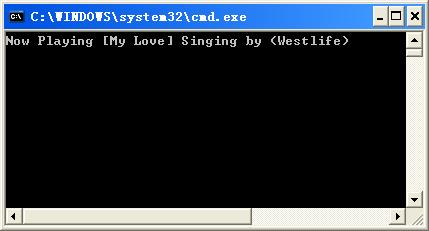Unity用法(构造器注入的两种方法)
对象的之前的依赖关系的表现方式之一,主对象通过构造器将其所依赖对象的实例的引入,并在将来的某个时候应用该实例。 而IOC对于该问题的解耦方法是应用
Constructor Injection 方式。什么情况下使用Constructor Injection
- 当实例化父对象时也能自动实例化所依赖的对象
- 通过简单的方式使得很容易做到在代码中查看每个类所依赖的项
- 父对象的构造器不需要很多相互间有关联关系的构造器
- 父对象的构造器不需要很多参数
- 通过不使用属性和方法暴露给调用程序,达到封装字段值以不能被看到的目的
- 通过修改依赖对象的代码来控制哪些对象可以被注入,而不用改动父对象或应用程
代码方式:
准备工作
{
public string Singer
{
get
{
return "Westlife";
}
}
public string Name
{
get
{
return "My Love";
}
}
}
public class Owner
{
public string Name
{
get
{
return "Inrie";
}
}
public int Age
{
get
{
return 24;
}
}
}
public interface IPlayer
{
void Play();
}
开始
根据类构造器的个数分成下面两种情况:
1.单个构造器
2.多个构造器
1.单个构造器:
Unity对于单个构造器的情况,将做自动的依赖注入。
看个例子:
{
public Song mSong;
public Mp3Player(Song song,Owner owner)
{
this.mSong = song;
}
public void Play()
{
Console.WriteLine(string.Format("Now Playing [{0}] Singing by ({1})", this.mSong.Name, this.mSong.Singer));
}
}
可以通过下面的方式来获取Mp3Player对象实例。
container.RegisterType<IPlayer, Mp3Player>();
IPlayer player = container.Resolve<IPlayer>();
player.Play();
输出为:

上例中Mp3Player类中只有一个构造器,该构造器依赖于两个类:Song和Owner类。Unity容器在执行Resolve方法时会自动装配所依赖类的实例,注入到构造器中。
当类中只有一个构造器时,Unity容器在装配时自动以此构造器为默认构造器。
2.多个构造器:
Unity对于多个构造器的情况,需要配合[InjectionConstructor]特性来实现依赖注入。
有以下几个原则:
A.有加上[InjectionConstructor]标签的构造器为依赖注入的构造器
{
public Song mSong;
[InjectionConstructor]
public Mp3Player(Owner owner)
{
}
public Mp3Player(Song song,Owner owner)
{
this.mSong = song;
}
public void Play()
{
Console.WriteLine(string.Format("Now Playing [{0}] Singing by ({1})", this.mSong.Name, this.mSong.Singer));
}
}
该例中为 Mp3Player(Owner owner) 构造器贴上[InjectionConstructor]标签,所以该构造器将作为依赖注入的构造器。
B.如果没有任何构造器有贴上[InjectionConstructor],则使用参数最多的构造器作为依赖注入的构造器
{
public Song mSong;
public Mp3Player(Owner owner)
{
}
public Mp3Player(Song song,Owner owner)
{
this.mSong = song;
}
public void Play()
{
Console.WriteLine(string.Format("Now Playing [{0}] Singing by ({1})", this.mSong.Name, this.mSong.Singer));
}
}
该例中由于有多个构造器,同时也没有为任何一个构造器贴上[InjectionConstructor]标签,则使用参数最多的构造器,即Mp3Player(Song song,Owner owner)构造器作为依赖注入的构造器。
这里有一点需要注意:如果有多个构造器都是属于"参数最多"的构造器,则会出现错误。
注入到存在的对象实例
用Resolve方法来获取已存在的对象实例时不会做 Constructor Injection,因为该对象的创建没受到 Unity 容器的任何影响。甚至用BuildUp方法也不行。作为取代的方法,可以采用 Property Injection。
关于BuildUp方法可参考:
Unity Application Block 1.0系列(5): 使用BuildUp让对象实例也支持依赖注入
关于Property Injection可参考:
Unity Application Block 1.0系列(3): 属性/设值方法注入(Property/Setter Injection)
配置文件方式:
首先在配置文件中引入以下配置节,前提是要先加上类型别名。即加上<typeAlias>配置节。
</register >
然后在代码中应用container.Resolve<Database>();得到DataBase的实例。
完整的代码是:
posted on 2012-05-20 17:36 malaikuangren 阅读(1082) 评论(0) 编辑 收藏 举报

